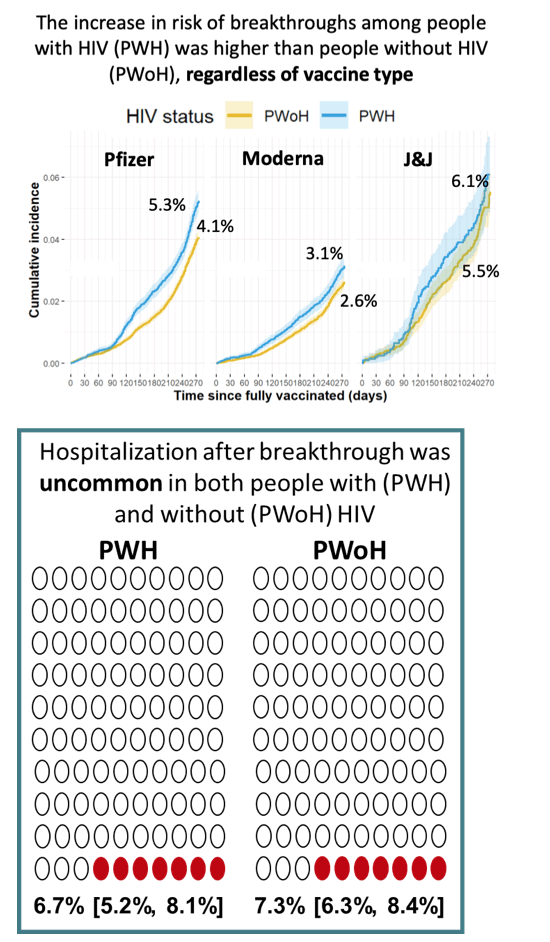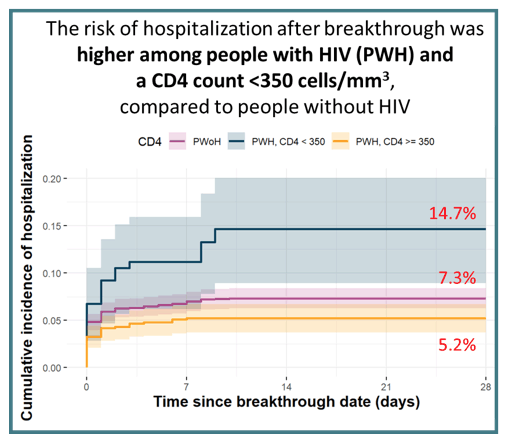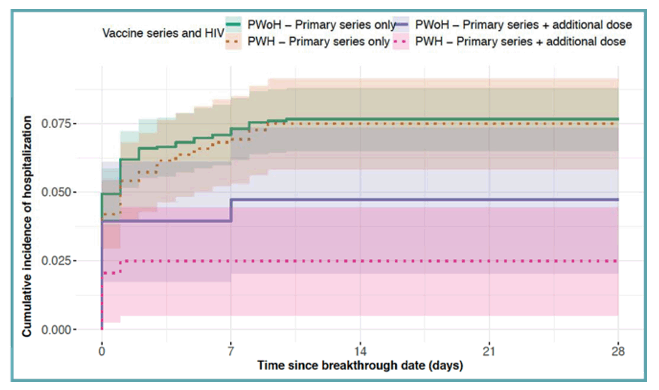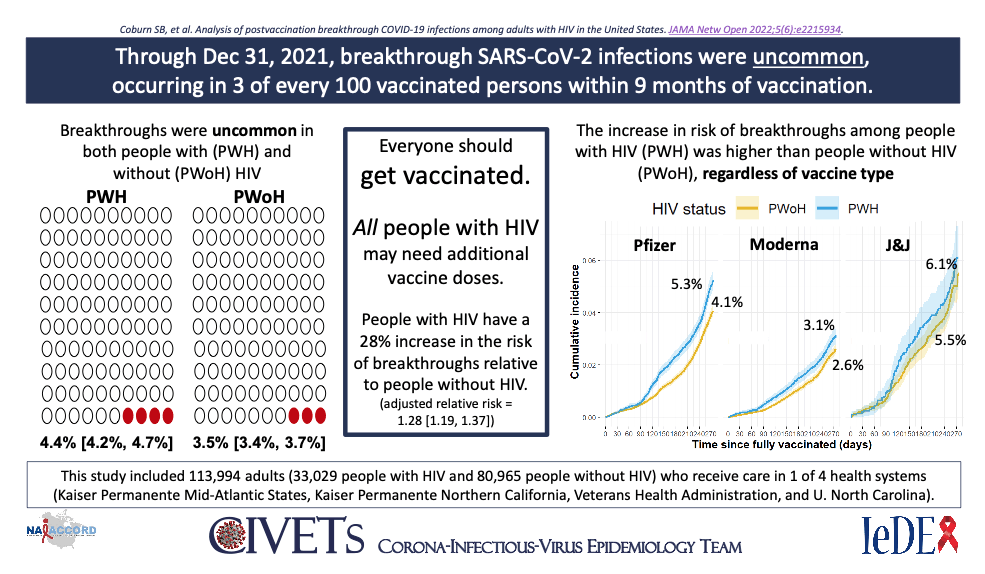| |
Greater risk of post-vaccination breakthrough
severe COVID-19 illness in people with HIV and CD4 <350
|
| |
| |
Download the PDF here
Dear colleagues,
Today in JAMA Network Open, we estimate a 28% increased risk of post-vaccination COVID-19 breakthrough infections in people with (vs. without) HIV in the CIVETs longitudinal cohort collaboration. We updated this analysis through Dec 31, 2021, capturing the increase in cases form the Omicron surge that peaked mid-January 2022. Importantly, absolute risk of post-vaccination COVID-19 breakthrough infection was low in people with HIV (cumulative incidence = 4.4% [95% CI, 4.2%-4.7%] and people without HIV (cumulative incidence = 3.5% [95% CI, 3.4%-3.7%]; log-rank P < .001), yielding a risk difference of 0.9% [95% CI, 0.6%-1.2]. There was a 28% increase in the risk of breakthrough infection in people with vs. without HIV (adjusted hazard ratio=1.28 [95% CI, 1.19, 1.37]. Updated infographic attached (with navy blue text box at the top).
Next, we investigated the question of whether those with HIV who experienced a breakthrough were at greater risk of severe illness as compared to people without HIV experiencing a breakthrough (see our pre-print, the study is currently under peer review). We estimated the risk of hospitalization within 28 days after a post-vaccination breakthrough infection (i.e. severe breakthrough illness) was very low in both people with and without HIV (cumulative incidence of severe illness in the first 28 days after breakthrough = 6.7% vs. 7.3%, respectively, risk difference = -0.7% [95% CI -2.6%, 1.2%]).

However, the risk of severe breakthrough illness was 59% [95% CI 0.99, 2.46, p=0.49] higher in people with HIV and a CD4 count <350 cells/mm3 compared with people without HIV.

Those who received an additional vaccine dose >28 days after completing the primary series (2 doses of mRNA vaccines or 1 dose of J&J) had a reduced risk of severe breakthrough illness in both people with and without HIV.

Infographic attached (with the green box at the top).
Adults who were fully vaccinated by June 30, 2021 and had a post-vaccination breakthrough infection (N=3,649) were followed for 28 days after the date they had detectable SARS-CoV-2 or a COVID-19 diagnosis in 4 healthcare systems (Kaiser Permanente Northern California, Kaiser Permanente Mid-Atlantic States, University of North Carolina Chapel Hill, and the Veterans Aging Cohort Study). This study was supported through a supplement to the NA-ACCORD by the National Institutes of Allergy and Infectious Diseases, National Institutes of Health.
Best,
Keri on behalf of the CIVETs team
Keri N Althoff, PhD, MPH
Associate Professor
Department of Epidemiology, Johns Hopkins Bloomberg School of Public Health
Joint Appointment in the Oncology Center, Johns Hopkins University School of Medicine
Provost Fellow for Research Communication, Johns Hopkins University
615 N Wolfe St, Rm E7142
Baltimore, MD 20295
jhsph.edu | naaccord.org | pearlhivmodel.org
atkerinalthoff on Twitter
Pronouns: She/Her/Hers


|
|
| |
| |
|
|
|